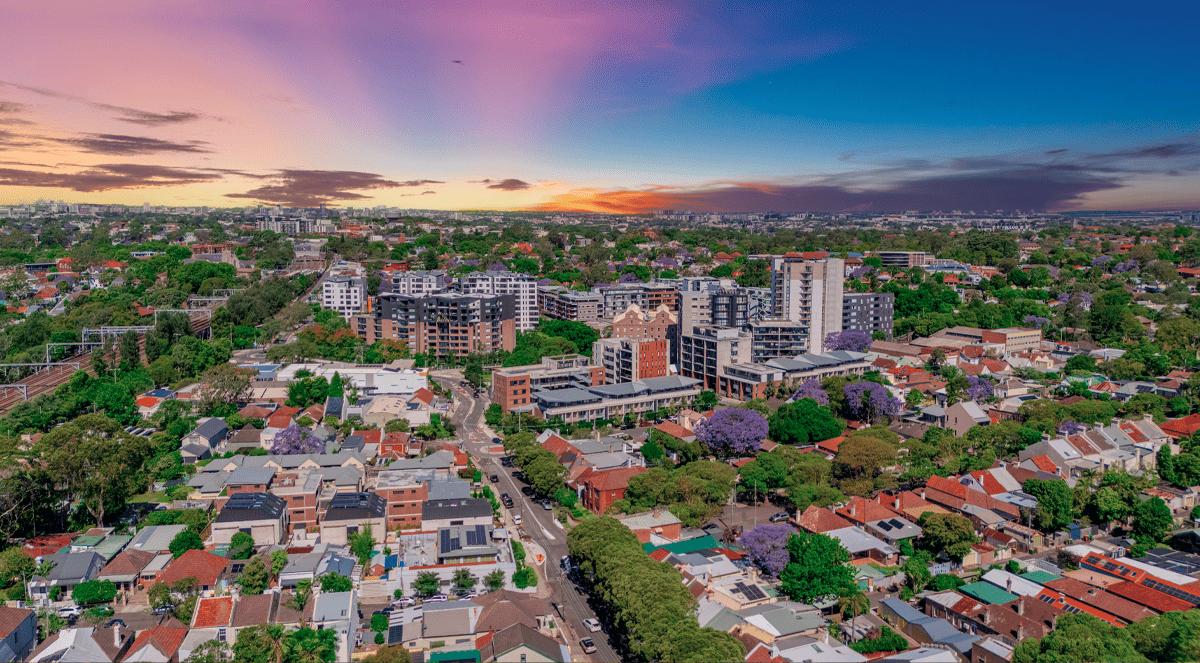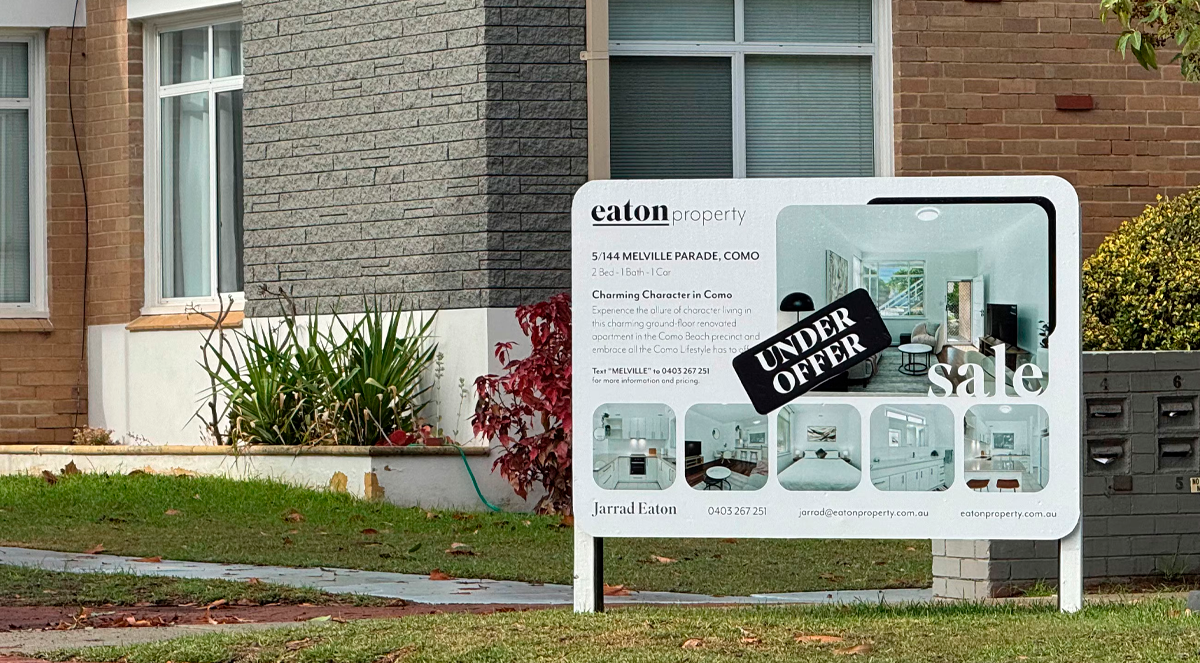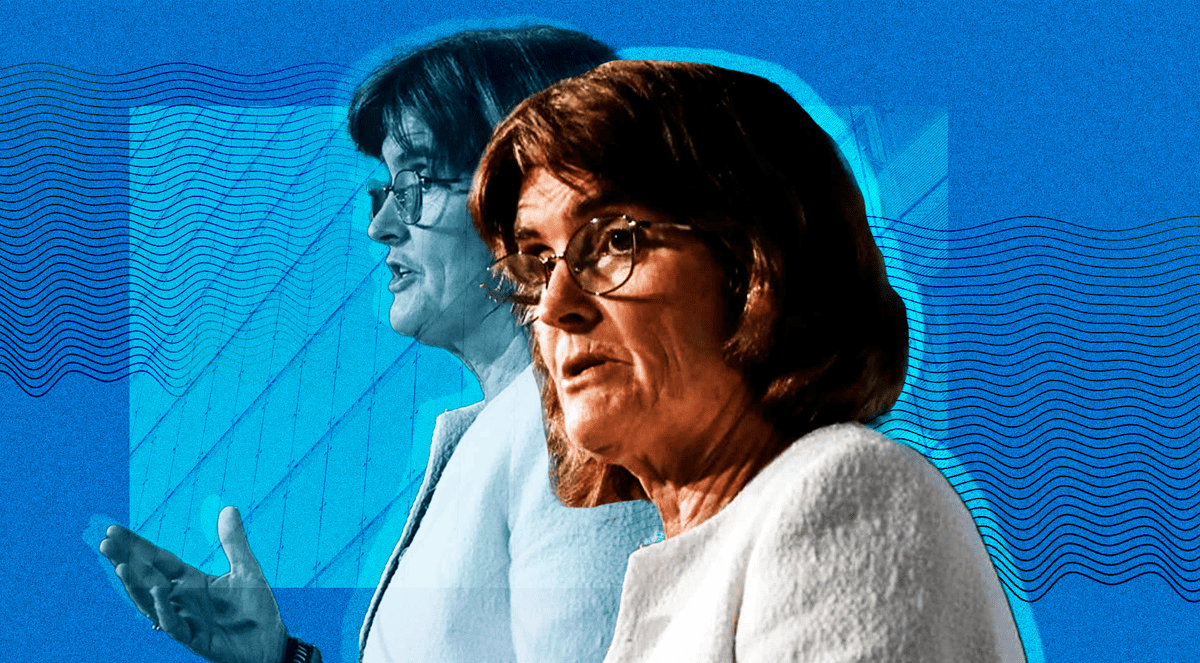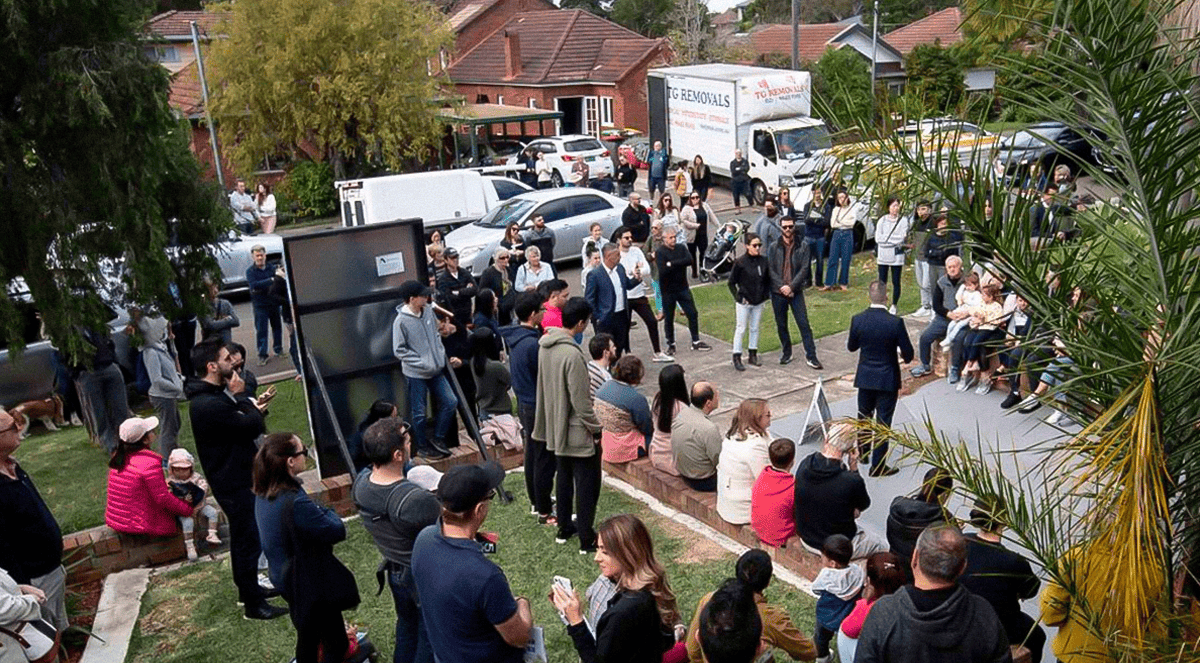Features > Property News & Insights > Market updates
Inflation rules out Christmas rate cut; some say next RBA move is up

Image by Jason South/The Sydney Morning Herald
KEY POINTS
- Higher-than-expected inflation has killed off any chance of a near-term RBA rate cut, and may trigger rate hikes instead
- Annual headline inflation rose 3.8% to the end of October 2025, with the core measure at 3.3% - both above RBA forecasts and outside the central bank’s 2–3% inflation target band
- Several economists and major banks now say the current easing cycle is over, with some financial institutions predicting rate rises as early as May next year
There’s not going to be any Christmas miracle for Australians with a mortgage this festive season, with higher-than-expected inflation data all but ruling out another rate cut by the Reserve Bank of Australia at its final board meeting for 2025.
In fact, the spectre of stubbornly high inflation has led several leading economists to predict the RBA’s next move will be to raise interest rates - not cut them - next year.
The details
Data from the Australian Bureau of Statistics shows inflation rose to 3.8% on an annualised basis in October 2025, up from 3.6% in September, largely driven by housing costs and a 37% spike in electricity prices, as state government power subsidies came to an end.
The Reserve Bank’s preferred inflation measure, the so-called “Trimmed mean”, which strips out more volatile items, also rose to 3.3% in the 12 months to the end of October, up from 3.2% in September.
Both inflation measures are now above RBA forecasts and well above the 2-3% band the central bank is mandated to contain inflation within.
Analysts say any chance the Reserve Bank will cut rates in the short term has evaporated.
“Consumers were hoping for a bit more relief next year, but this latest CPI read has poured cold water over expectations,” says comparison site Canstar’s Data Insights Director, Sally Tindall.
“If anything, the conversation is now shifting to whether the cutting cycle has already run its course, and potentially, what it would take for the central bank to revert back to hikes.”
The grim inflation numbers have also increased pressure on the Federal government to consider extending its own power subsidy payments, which are due to run out at the end of the year.
Two of Australia’s “Big 4” retail banks, CBA and NAB, have previously declared they expect no more rate cuts this easing cycle, in addition to the 3 the RBA has already delivered in February, May and August this year.
After the release of the inflation numbers, ANZ Senior Economist Adelaide Timbrell was sounding decidedly guarded about her bank’s prediction of at least one more RBA rate cut.
“Today’s print supports our view that the RBA will hold in December and increases the risk that the easing cycle has ended,” she wrote in an economic note.
Merchant bank Barrenjoey has declared further rate cuts are off the table, with Chief Economist Jo Masters predicting that the RBA will lift the cash rate as early as May next year to 3.85%, followed by another rise later in the year.
UBS is also expecting the central bank to lift the cash rate twice by the end of 2027, starting late next year.
“There is now more of a ‘trend’ of higher inflation, which is becoming concerning; even relative to our long-held view on inflation, which has been relatively hawkish,” Chief Economist George Tharenou told the Australian Financial Review.
The higher-than-expected inflation numbers have also caused financial markets to start pricing in the chance of an interest rate rise late next year, instead of further RBA rate cuts.
However, AMP’s Deputy Chief Economist Diana Mousina says she still thinks there’s “the chance of a rate cut next year.”
“But we really need to see the inflation figures slow,” she adds quickly.
What this means for mortgages
In a sign that retail banks are moving towards the view that the next move in official interest rates will be up, not down, Canstar says that since the start of November, at least 18 lenders have hiked at least one fixed home loan rate.
This includes Westpac and Macquarie Bank, two of the biggest mortgage lenders.
By comparison, Canstar says just nine lenders have cut at least one fixed rate over the same time frame.
“We’re already seeing fixed rates creep up as markets recalibrate their prices on the back of rising inflation,” says Canstar’s Sally Tindall.
“With another round of data confirming inflation is proving problematic, more hikes are likely to follow.”
Ms Tindall also points out that the number of sub-5% fixed rates is starting to shrink.
“Just a month ago, there were 46 lenders offering at least one fixed rate under 5%, now we’re down to 36.
“That’s a sizeable shift in a short space of time.
“That said, some of today’s lowest fixed rates are still sharp, particularly for people who want the safety of predictable repayments.”
The message is clear - if you are a homeowner or an investor who wants the certainty of fixed rates, rather than a standard variable rate loan - the time to talk to your mortgage broker is now.
Effect on the property market
For those who were hoping the prospect of higher inflation and higher interest rates might mean cheaper property prices, think again.
Australia’s current housing shortfall is so severe that property prices are likely to keep rising, even in the face of higher interest rates.
In his annual “Boom and Bust” report, released just a day before the latest ABS inflation print, SQM founder and Managing Director Louis Christopher pointed out that he still expects home prices to increase in all capital cities next year, even if further RBA rate cuts do not materialise, albeit at a slower pace.
Mr Christoper says he expects Perth, Brisbane and Adelaide would still see double-digit growth of up to 14% in 2026, but price momentum could be more muted in Sydney and Melbourne, which could both see up to 6% gains.
Stay Up to Date
with the Latest Australian Property News, Insights & Education.




.png?width=292&height=292&name=Copy%20Link%20(1).png)
 SIGN UP FOR FREE NEWSLETTER
SIGN UP FOR FREE NEWSLETTER





.jpg?width=1920&height=1080&name=Warning%2c%20You%20Might%20Be%20Facing%20Higher%20Taxes%20Soon%20(1).jpg)





.png?width=1920&height=1080&name=Rate%20Drops%20Signal%20BIGGEST%20Property%20Boom%20in%20DECADES%20(1).png)

.jpg?width=1920&height=1080&name=Labor%20vs%20Liberal%20These%20Housing%20Policies%20Could%20Change%20the%20Property%20Market%20Forever%20(1).jpg)
.jpg?width=1920&height=1080&name=QLD%20Slashes%20Stamp%20Duty%20Big%20News%20for%20Investors%20%26%20Home%20Buyers%20(1).jpg)
.jpg?width=1920&height=1080&name=Trump%20Just%20Slapped%20Tariffs%20%E2%80%93%20Here%E2%80%99s%20What%20It%20Means%20for%20Australia%20(1).jpg)
.jpg?width=1920&height=1080&name=Federal%20Budget%202025%20More%20Debt%2c%20No%20Housing%20%E2%80%93%20Here%E2%80%99s%20What%20You%20Need%20to%20Know%20(1).jpg)
.jpg?width=1920&height=1080&name=Australias%20Housing%20Crisis%20is%20about%20to%20get%20MUCH%20Worse%20(New%20Data%20Warns).jpg)
%20(1).jpg?width=1920&height=1080&name=Australias%20RENTAL%20CRISIS%20Hits%20ROCK%20BOTTOM!%20(2025%20Update)%20(1).jpg)
%20(1).png?width=1920&height=1080&name=Is%20Adelaide%20Still%20a%20Good%20Property%20Investment%20(2025%20UPDATE)%20(1).png)
.jpg?width=1920&height=1080&name=RBA%20Shocks%20with%20Rate%20Cuts!%20What%E2%80%99s%20Next%20for%20Property%20Investors%20(1).jpg)
%20(1).jpg?width=1920&height=1080&name=I%20Predict%20The%20Feb%20Rate%20Cut%20(My%20Price%20Growth%20Prediction)%20(1).jpg)
.png?width=1920&height=1080&name=Why%20Property%20Prices%20Will%20Rise%20in%202025%20Market%20Predictions%20(1).png)
.jpg?width=1920&height=1080&name=Why%20Investors%20Are%20Choosing%20Apartments%20Over%20Houses%202%20(1).jpg)
.jpg?width=1920&height=1080&name=Why%20Rate%20Cuts%20Will%20Trigger%20A%20Property%20Boom%20(1).jpg)
.jpg?width=1920&height=1080&name=Retire%20On%202Million%20With%20One%20Property%20(Using%20SMSF).jpg)
.jpg?width=1920&height=1080&name=4%20Reasons%20Why%20You%20Should%20Invest%20in%20Melbourne%20Now%20(1).jpg)
%20(1).jpg?width=1920&height=1080&name=Old%20Property%20vs%20New%20Property%20(Facts%20and%20Figures%20Revealed)%20(1).jpg)
%20(1).jpg?width=1920&height=1080&name=Will%20The%20New%20QLD%20Govt%20Create%20a%20Property%20Boom%20or%20Bust%20(My%20Prediction)%20(1).jpg)
%20Scott%20Kuru%20(1).jpg?width=1920&height=1080&name=Inflation%20Hits%20Three-Year%20Low%20(Will%20RBA%20Cut%20Rates%20Soon)%20Scott%20Kuru%20(1).jpg)
.jpg?width=1920&height=1080&name=How%20to%20Buy%20Investment%20Property%20Through%20SMSF_%20The%20Ultimate%20Guide%20(1).jpg)
.jpg?width=1920&height=1080&name=Victoria%20Slashes%20Stamp%20Duty%20Melbourne%20Set%20to%20Boom%20Scott%20Kuru%20(1).jpg)
.png?width=1571&height=861&name=Are%20Foreign%20Buyers%20Really%20Driving%20Up%20Australian%20Property%20Prices%20(1).png)
.jpg?width=1920&height=1080&name=The%20Single%20Factor%20That%20Predicts%20Property%20Growth%20Regions%20(1).jpg)
%20Scott%20Kuru%20(1).jpg?width=1920&height=1080&name=My%20Prediction%20On%20Rates%20%26%20Negative%20Gearing%20(Market%20Crash)%20Scott%20Kuru%20(1).jpg)

-1.png?width=1920&height=1080&name=Major%20Banks%20Cut%20Rates%20Will%20RBA%20Follow%20Suit%20(Sept%20Rate%20Update)-1.png)
%20Scott%20Kuru-1.png?width=1920&height=1080&name=Rate%20Cut%20Coming%20What%20New%20Zealands%20Move%20Means%20for%20Australia%20(Sept%20Prediction)%20Scott%20Kuru-1.png)
%20(1).jpg?width=1920&height=1080&name=Buy%20when%20the%20interest%20rates%20are%20high!%20(Why%20you%20must%20buy%20now!)%20(1).jpg)
.jpg?width=1920&height=1080&name=Carms_Revised%20Taxes%20Due%20Aug%209%20YT%20Thumbnail02%20(1).jpg)
.jpg?width=1920&height=1080&name=Carms_Too%20Little%20Too%20Late%20Aug%207%20YT%20Thumbnail01%20(1).jpg)









.jpg?width=1920&height=1080&name=Carms_Rate%20Drop%20In%20July%20Jun%2010%20YT%20Thumbnail02%20(1).jpg)
.jpg?width=1920&height=1080&name=Carms_Own%20a%20Property%20V6%20Jun%205_YT%20Thumbnail%20(1).jpg)









.png?width=1920&height=1080&name=Artboard%201%20(3).png)






.jpg?width=1920&height=1080&name=YT%20thumbnail%20%20(1).jpg)

